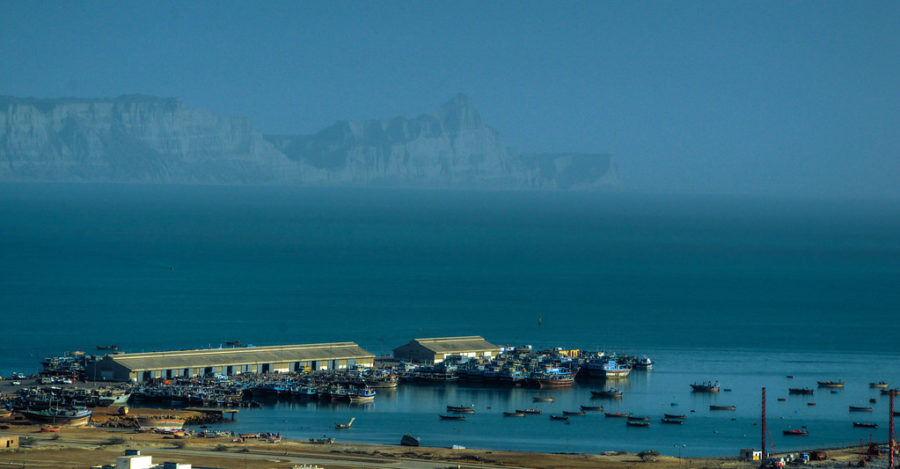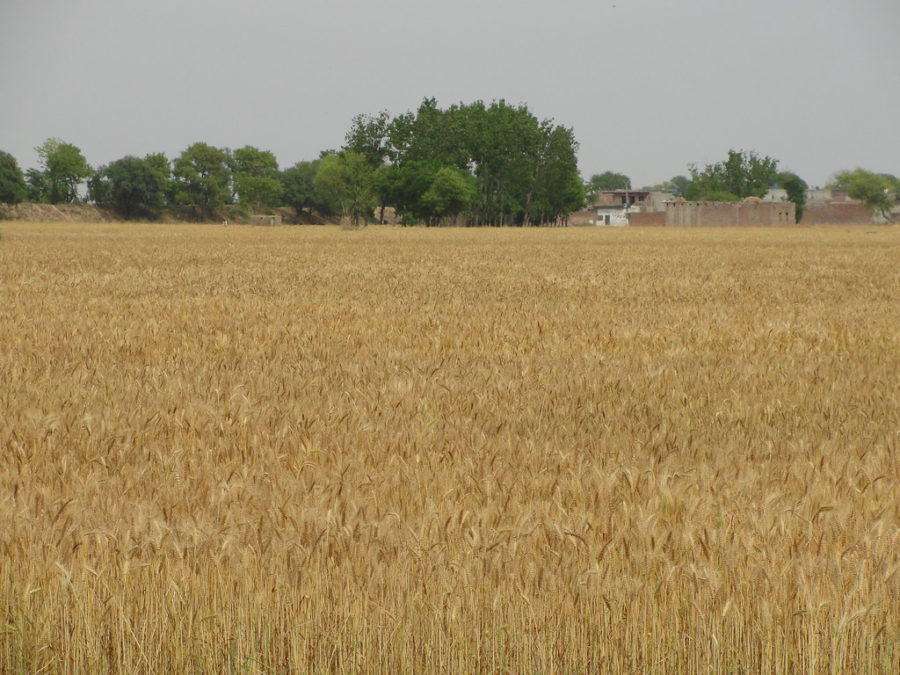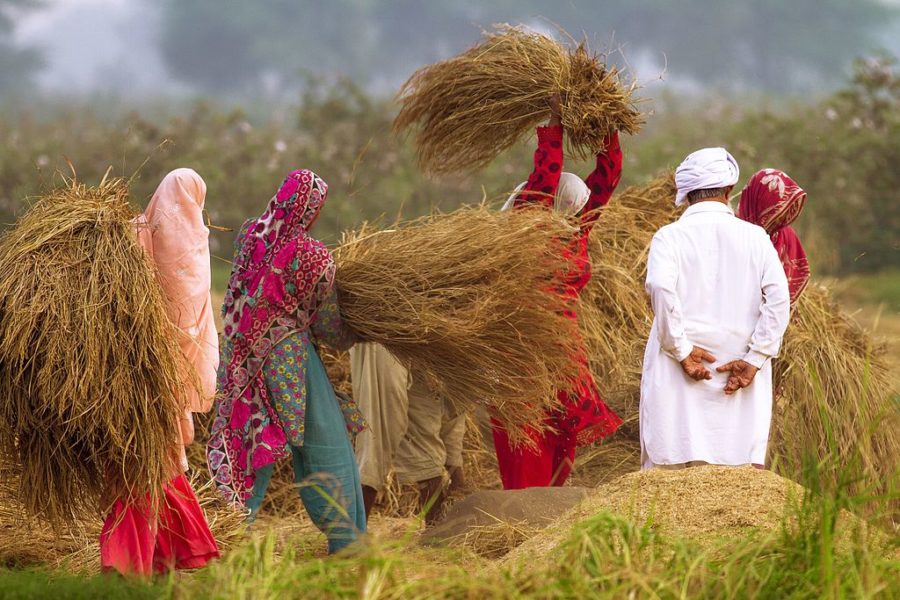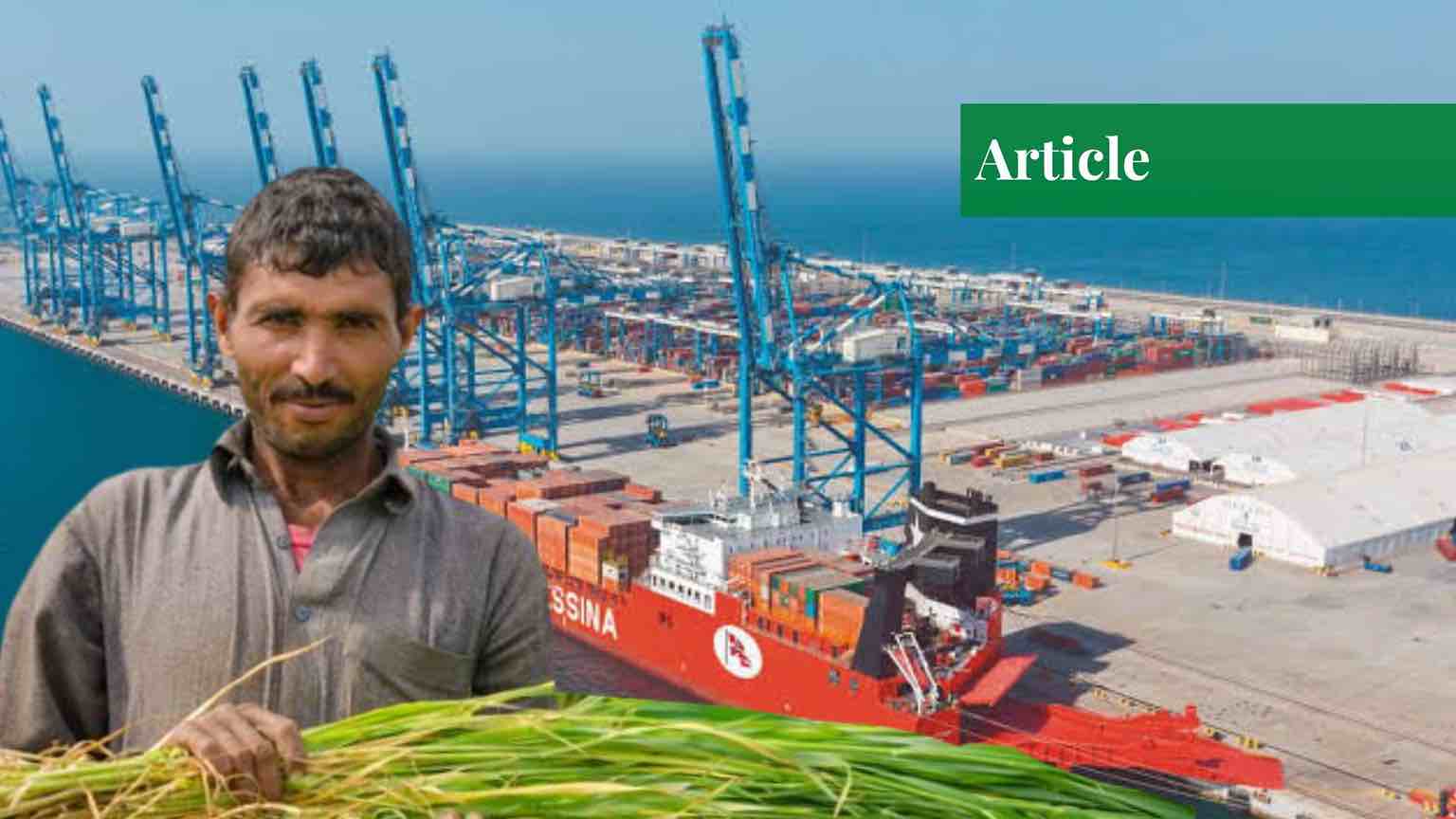Mr. Bilal is an agronomist student at the University of Agriculture, Faisalabad. He has been writing blogs on national and international politics and international relations since 2017.
Introduction
In April 2015, Xi Jinping, the president of China, came on a historical visit to Pakistan to formally ink the China-Pakistan Economic Corridor (CPEC)—the flagship project of China’s earlier announced Belt and Road Initiative (BRI). At that time, CPEC was mainly conceived as modern transportation networks (motorways and railways) linking the seaports of Gwadar and Karachi with China’s north-western region of Xinjiang coupled with massive power generation projects.

It aimed to enhance regional connectivity and cheaper trade routes, and ensure development in both Xinjiang and Balochistan – the underdeveloped provinces on both sides of the border. But next year, China and Pakistan launched their long-term cooperation plans which spanned the establishment of industrial parks, IT connectivity, poverty alleviation, and above all, agriculture development – the biggest sector of Pakistan’s economy and one where CPEC would leave the most long-lasting effects
The outline of long-term agricultural cooperation under CPEC, originally published in 2015, was aimed at:
- Establishing an agriculture demonstration center and developments in seed and farm mechanization.
- Adoption of Chinese technology and experience to enhance irrigation efficiency and agricultural productivity, and encouragement of innovative technologies and high-value cropping.
- Boosting China-Pakistan cooperation in research and development of food, fisheries, livestock, and agriculture sector.
- Setting up agro-processing zones along the China-Pakistan Economic Corridor (CPEC) for various agricultural commodities along with farms, packaging, and storage units.
It mainly proposed development in ten major avenues: engineering research, production, processing, storage and transport, infrastructure construction, disease prevention and control, water resource utilization, land reclamation, agricultural information, and agriculture market development.
In all, CPEC aims to establish an advanced and cutting-edge supply chain of agriculture products, beginning from the introduction of modern high-yielding varieties up to the storage, marketing, and distribution in both domestic and international markets. Apart from being the primary benefactor of key CPEC initiatives, progress in the agriculture sector will also be encouraged indirectly by other developmental projects.
Infrastructure Development
There is an established linkage between infrastructure expansion and industrial and agricultural growth, especially in rural economies. Roads are still the primary means for all kinds of transport and communications in the country and there is roughly more than 3,000 kilometers long construction/up-gradation of motorways and highways listed under CPEC, most of which are either completed or are in the pipeline.
The first and foremost impact is on the domestic trade and movement of perishable commodities particularly at longer distances. There has been a continuous rise in vegetable and fruit farming in the upland provinces of Punjab and Sindh, both in the form of tunnels and orchards, but these are sensitive produce to transport.
Hence, most farmers stick to small-scale farming so they can easily market their products. But with the development of an interconnected road network across the country and already reducing travel times between major cities, CPEC will certainly encourage more & bigger investors to venture into the already flourishing agribusiness of high-value products.
Corporate Farming
Large-scale agricultural farms commonly owned and run by big conglomerates are termed corporate farms. While the subject demands a separate detailed and dedicated piece, we will put a brief attempt to review its cost and benefit ratio and how it fits into the long-term CPEC goals.
On the positive side, It brings major investors in agribusiness, employing industrial standard practices to grow mono-crops on large swaths of land with better productivity and efficiency per acre. It makes economical the use of expensive but efficient tools like center pivot irrigation systems, drones for spraying pesticides, herbicides, and crop nutrients, better quality seeds, and modern harvesters which render losses to the minimum.
It successfully reduces the minimum support price driving down inflation and ensuring food security for everyone. Lastly, timely and efficient harvesting can also decrease the food wastage of both perishable and non-perishable commodities during post-harvest treatment. On the other hand, there is no shortage of demerits either.
The most damaging concern, especially to an agricultural country is that these organizations easily drive small landholders out of the market and they end up either selling or leasing their lands. Corporations usually follow the pattern of vertical integration, hedging their monopoly over every step of the supply chain, effectively turning a country’s food security into private hands.
Environmental challenges associated with the rampant use of chemicals can also pose a serious threat. Despite all criticism, I believe that humans won’t have any other way to ensure the availability of food across the socioeconomic spectrum in the wake of the population boom. Therefore, the policy of corporate farming should be pursued with obvious checks in place.
Coming back to the China-Pakistan Economic Corridor, the issue of including corporate farming in CPEC had been pending since the last PML-N (Pakistan Muslim League-N) era but the effort remained short of many practical steps during the PTI (Pakistan Tehreek-e-Insaf) government as well, until this March.
On 2nd March 2022, Punjab Cabinet sanctioned leasing out state-owned land for corporate farming under CPEC. Then-chief minister, Usman Buzdar, directed a ministerial committee to lay out the framework for leasing 500 to 5000 acres. The Board of Investors (BOI) also proposed key policy initiatives like revoking tariffs on the import of agri-machinery, quashing the upper ceiling on corporate land ownership, and opening various agri-sectors like the reclamation of uncultivable lands, integrated agriculture, and development of irrigation facilities to foreign investments.
The government of Pakistan needs to tread carefully in these matters with independent power producers, mostly referred to as IPPs, being a lesson where expensive electricity, capacity and huge energy circular depts (ECDs) have grappled the energy sector.
Special Economic Zones & Food Processing
There are four special economic zones (SEZs) in CPEC aimed at fruit and food processing across the country. Rashakai Economic Zone in Nowshera encompasses 1,000 acres with investment feasibility for fruit food packaging. This zone is near the Khunjerab Pass, Torkham, and Azakhel dry port, drawing a pretty favorable investment opportunity for regional trade between Khyber Pakhtunkhwa, Punjab, and southwest China and Central Asia.
The Bostan Industrial Zone, established in Pishin near Quetta, also includes 1,000 acres and will hold fruit processing, cold storage, and the whole halal food industry. Its nearby areas like Qila Saifullah, Qila Abdullah, and Ziarat are known for vegetables, fruits, especially apples and grapes, dry fruits, and livestock. Development of 200 acres of Phase-I is already completed and industrial plots are open for commercial allotment.
It will play a crucial role in boosting employment opportunities for youth, creating a peaceful business environment, and in the end, curbing the violence and instability haunting the region for decades. Allama Iqbal Industrial Zone, one of the biggest of all to be constructed on 3,217 acres in the textile hub of Pakistan, Faisalabad, will also include seed and food processing apart from other industrial sections.
The groundbreaking of AIIC (Allama Iqbal Industrial City) happened in January 2020 and various domestic and international companies have already begun their operations. Last but not the least, the ICT Model Industrial Zone planned to be established on 500 acres in Islamabad will also contribute to the food processing sector.
Research & Development
Pakistan spends the least on research and development (R&D) in the agriculture sector, with the national average of R&D investments standing at just 0.1% compared to the global average of 3%, despite the common understanding that this is the area where major problems lie.
Our major crops like wheat, rice, cotton, and maize have been hitting the yield ceiling for quite some time now, and while new cultivars are being introduced every year, nearly all of them bring increased disease and pest resistance with no potential yield increase in sight. Moreover, little is being done about developing solutions contextual to the socioeconomics of our farming community and enhancing the adaptability of high-value crops on a commercial basis.

Early trials on Chinese hybrid wheat varieties have been going on in Pakistan since 2018 when China’s Sinochem Group, through its subsidiary China National Seed Group Company (CNSGC), experimented at 230 sites ranging over 2,000 hectares. The results were astonishing with a 24.4 average yield increase.
The Guard Agriculture Research and Services Group which is working in conjunction with the Bejing Academy of Agriculture and Forestry Sciences (BAAFS), reported 20% higher yields while sowing 90% fewer seeds in 2020. Recently, these hybrid varieties have been submitted to the government of Pakistan for approval according to the Guard Group’s CEO Malik Ali. “We hope that like hybrid rice, hybrid wheat will also bring a revolution in the agriculture sector of Pakistan,” stated Malik Ali in March this year.
China and Pakistan exhibit almost the same cotton plantation areas while China ranks second globally in cotton production and Pakistan ranks fourth, which highlights the huge potential for vertical yield improvement through a joint research process. In August 2019, the Pakistani government decided to establish a joint cotton research laboratory in Multan to develop climate-resilient cotton cultivars under the China-Pakistan Economic Corridor’s (CPEC) socio-economic development framework.
It also decided to establish an oil laboratory in Faisalabad to enhance the quality and quantity of oil content in rapeseed crops. Joint research on new varietal development is also going on at Cotton Research Institute in Henan while Xinjiang Agricultural University (China) and the University of Agriculture Faisalabad (UAF) in Pakistan collaborate on experimental mechanical picking on cotton to improve the purity.
In 1986, National Tea Research Institute (later became NTHRI) was established on 50 acres of land in Shankiari, Mansehra at the recommendation of Chinese experts after they identified the climate and environment of the area as suitable for tea cultivation. National Tea and High-Value Crops Research Institute (NTHRI) is working on the adaptation and commercialization of various high-value crops like tea, kiwi, olive, and other crops which can potentially bring millions of dollars in foreign exchange without putting further strain on our scarce environmental resources.
The government announced to advance tea production to 25,000 acres last year with Chinese help which has proved crucial in this area. Considering, that Pakistan is the biggest tea importer globally, self-sufficiency in black tea production will go a long way in saving foreign reserves. Coming to the imports, Pakistan’s biggest imports after petroleum products are edible oils and the state has not been able to increase local production.
Since oilseed crops for the Rabi season (rapeseed and mustard) are profitable, their season clash with wheat, and it’s not easy for farmers to give up their staple food for something new. Kharif season crops (soybean, sunflower, and safflower) are mostly exotic to Punjab, and their season clashes with other crops. So, Pakistani researchers are working on maize-soybean intercropping with their Chinese fellows since 2018 to make the adoption easy for farmers. According to experts, it can potentially reduce the country’s import bill by 50%.
The government is working on the commercialization of olive production on large scale in Pothohar and Khyber-Pakhtunkhwa since 2012 and these efforts have been bearing fruit with early producers reaching the international market. China is already assisting in the adoption and mechanization of olives farming in Pakistan but the potential is even greater. So far, Pakistan produce 1,500 tons of olive oil while it is aiming for 16,000 tons by 2027. These are just a few of many avenues both countries will be working to enhance Pakistan’s agricultural productivity and truly transform its agricultural economy on modern lines.
Trade Potential
China is the largest trading partner of more than 120 countries, except Pakistan. Currently, there is a huge trade imbalance between both crucial allies. In 2020, while the bilateral trade stood at $17.49 billion, Pakistan’s exports only accounted for $2.12 billion. The experts put the Sino-Pakistan bilateral trade potential at $30 billion to even $100 billion with sufficient efforts in this regard.
China has the world’s biggest population to feed and with constantly shrinking arable land resources due to urbanization, it needs to import major agricultural commodities. China imports soybean and grains from the United States, meat from Brazil, and dairy products from New Zealand. Pakistan and China do trade in agriculture commodities but despite the increasing trend, current numbers are nothing compared to the huge potential Chinese markets offer.

Pakistan’s rice exports to China in the first quarter of 2022 crossed $225 million. Currently, Pakistani rice dealings are centered around IRRI-6, IRRI-9 and semi/wholly milled rice while the true gem it offers is its classic aromatic basmati rice. But for now, only the Pakistani and Middle Eastern restaurants are purchasing it which means our basmati rice has a long way to go in terms of quality to capture the Chinese consumers.
The University of Punjab and Wuhan University are jointly working on new rice hybrids since 2019 like Honglian rice which was cultivated at nearly 30 million hectares globally in 2021. Efforts like these are pivotal to increasing rice exports but the government should also work to expand private-sector corporations under the umbrella of the China-Pakistan Economic Corridor.
China is the largest soybean importer in the world with the main suppliers being Brazil, the United States, and Argentina. Considering the tenuous relations between Beijing and Washington and previous trade wars, there is no doubt that China can use an alternative in the long term which is the main reason behind the Sino-Pak cooperation in this regard.
Along with these, meat, dairy products, and fruits are also untapped areas where there is a dire need to set up processing plants, and working groups and build industry-level coordination between both countries, and CPEC has provided us with the rare opportunity to do so.
If you want to submit your articles and/or research papers, please check the Submissions page.
The views and opinions expressed in this article/paper are the author’s own and do not necessarily reflect the editorial position of Paradigm Shift.



















